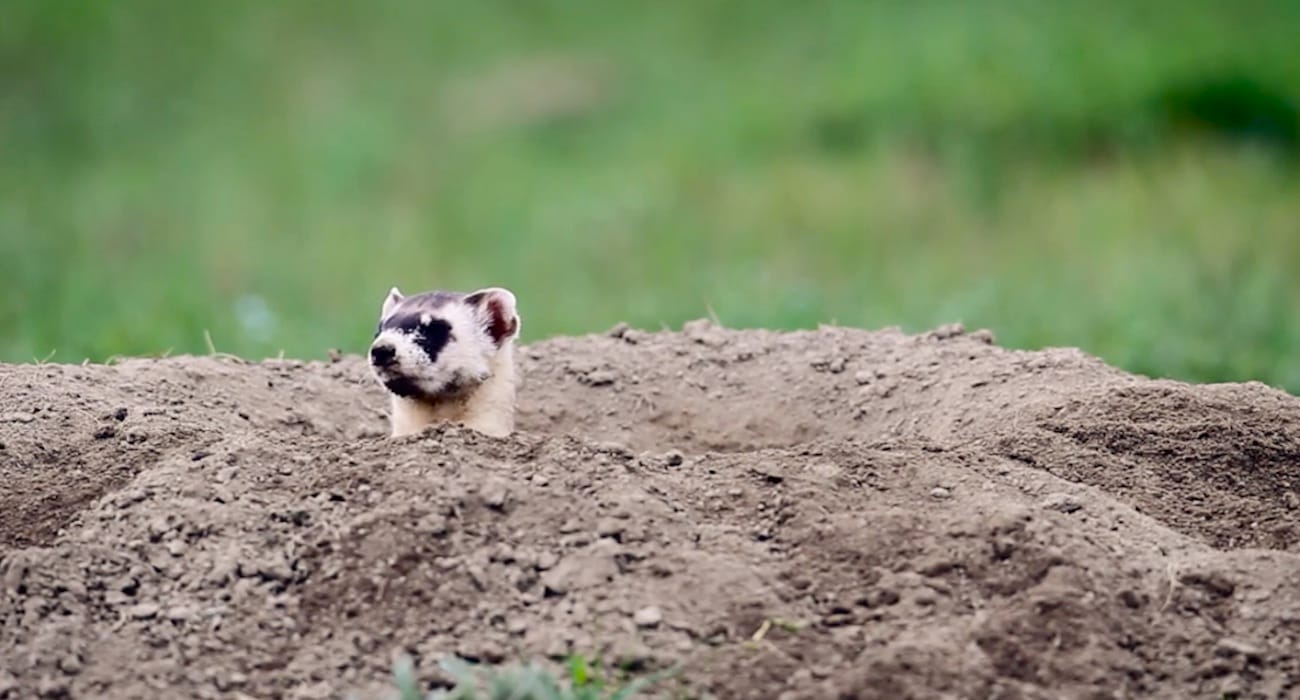Black-Footed Ferrets

They’re cute and cuddly, but nearly went extinct. Follow scientists in South Dakota as they capture black-footed ferrets to help save them.
According to Texas Parks and Wildlife Department, “Historically, the Black-footed Ferret occurred in the High Plains, Rolling Plains, and Trans-Pecos regions of North America. Black-footed Ferrets have not been seen in Texas since 1963; wild populations exist in Wyoming, South Dakota, and Montana.
Black-footed Ferrets rely on prairie dogs for food and shelter. Prairie dogs make up 90% of their diet. Scientists estimate that over 100 million acres of western rangelands were occupied by prairie dogs in the early 1900’s. Much of this area was also occupied by Black-footed Ferrets. Ferrets hunt mostly at night, so they are rarely seen. They live in burrows made by prairie dogs. It takes about 100 acres of prairie dog colony to support one ferret family (a female and her young). Predators such as owls, eagles, hawks, Coyotes, badgers, foxes, and Bobcats are the main cause of death for wild ferrets.
Black-footed Ferrets are endangered because much of the shortgrass prairie habitat on which the ferrets depend has been plowed for crops. Prairie dogs, which are the ferrets’ main food, have been reduced in number due to habitat loss, disease (and large-scale government poisoning programs). Prairie dogs have been killed because they eat grass used by livestock or winter wheat grown as a crop.”
